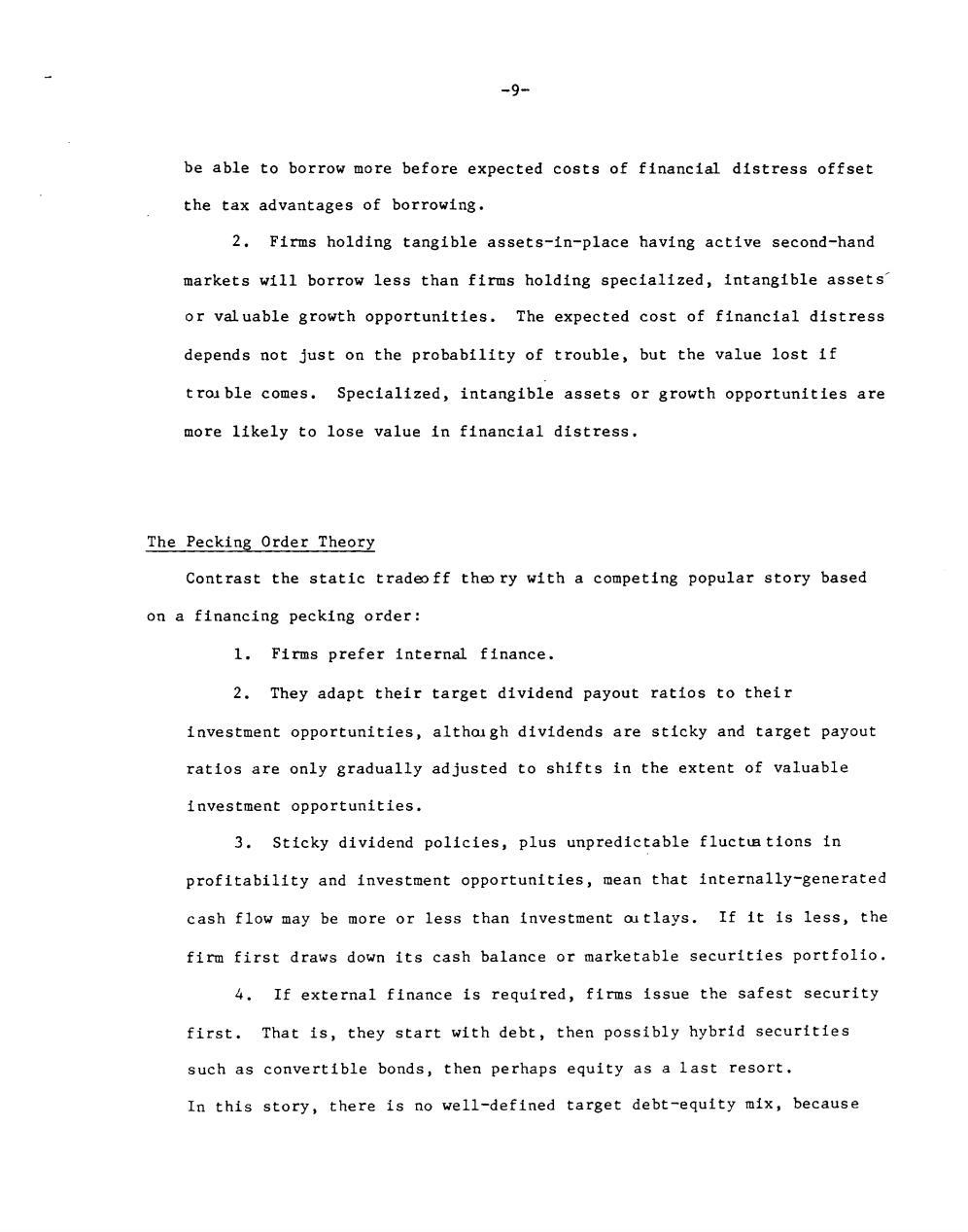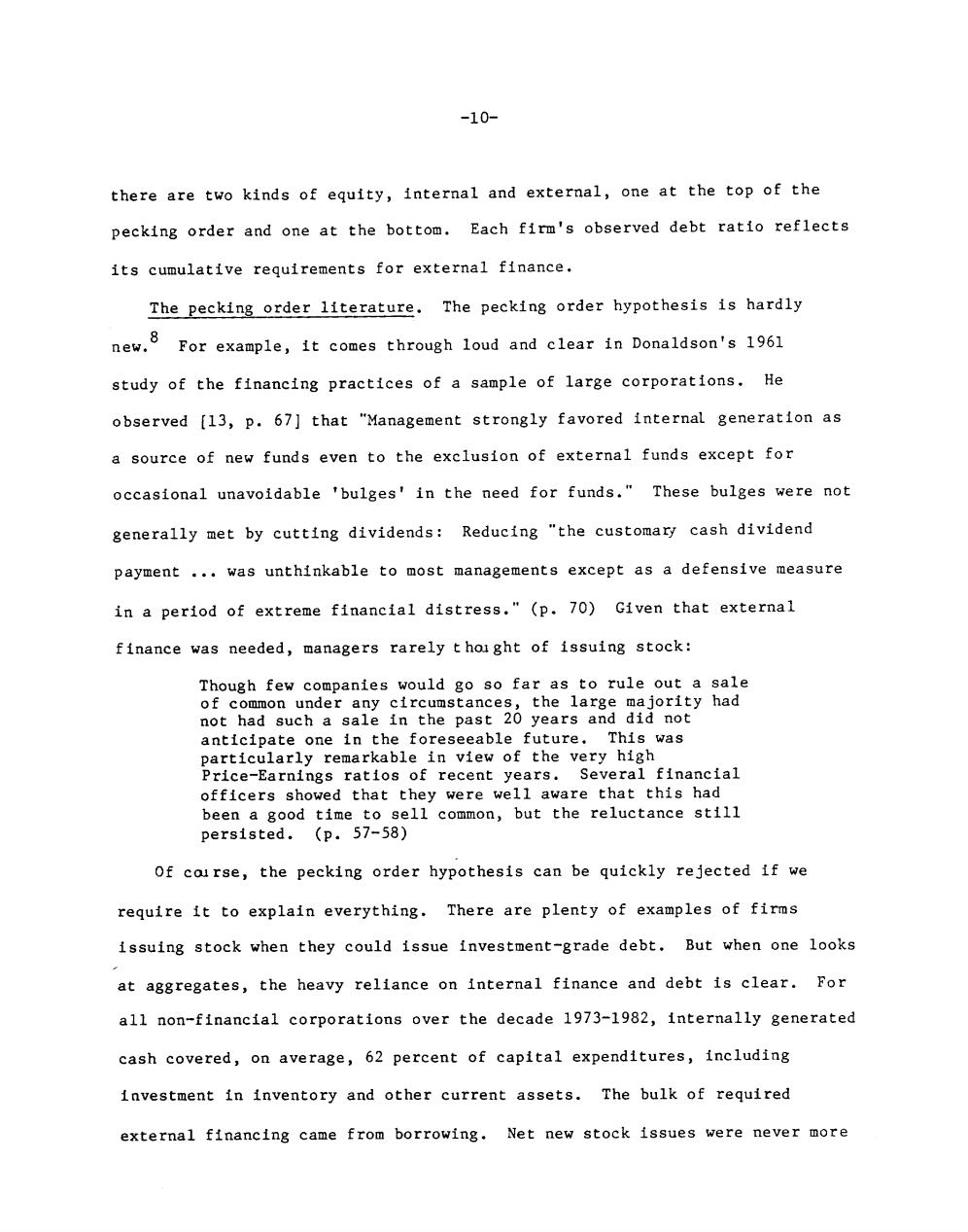
-9= be able to borrow more before expected costs of financial distress offset the tax advantages of borrowing. 2.Firms holding tangible assets-in-place having active second-hand markets will borrow less than firms holding specialized,intangible assets or val uable growth opportunities.The expected cost of financial distress depends not just on the probability of trouble,but the value lost if tro ble comes.Specialized,intangible assets or growth opportunities are more likely to lose value in financial distress. The Pecking Order Theory Contrast the static tradeo ff theo ry with a competing popular story based on a financing pecking order: 1.Firms prefer internal finance. 2.They adapt their target dividend payout ratios to their investment opportunities,althogh dividends are sticky and target payout ratios are only gradually adjusted to shifts in the extent of valuable investment opportunities. 3.Sticky dividend policies,plus unpredictable fluctu tions in profitability and investment opportunities,mean that internally-generated cash flow may be more or less than investment outlays.If it is less,the firm first draws down its cash balance or marketable securities portfolio. 4.If external finance is required,firms issue the safest security first.That is,they start with debt,then possibly hybrid securities such as convertible bonds,then perhaps equity as a last resort. In this story,there is no well-defined target debt-equity mix,because

-10- there are two kinds of equity,internal and external,one at the top of the pecking order and one at the bottom.Each firm's observed debt ratio reflects its cumulative requirements for external finance. The pecking order literature.The pecking order hypothesis is hardly new.8 For example,it comes through loud and clear in Donaldson's 1961 study of the financing practices of a sample of large corporations.He observed [13,p.67]that "Management strongly favored internal generation as a source of new funds even to the exclusion of external funds except for occasional unavoidable 'bulges'in the need for funds."These bulges were not generally met by cutting dividends:Reducing "the customary cash dividend payment ..was unthinkable to most managements except as a defensive measure in a period of extreme financial distress."(p.70)Given that external finance was needed,managers rarely t hoi ght of issuing stock: Though few companies would go so far as to rule out a sale of common under any circumstances,the large majority had not had such a sale in the past 20 years and did not anticipate one in the foreseeable future.This was particularly remarkable in view of the very high Price-Earnings ratios of recent years.Several financial officers showed that they were well aware that this had been a good time to sell common,but the reluctance still persisted.(p.57-58) of coirse,the pecking order hypothesis can be quickly rejected if we require it to explain everything.There are plenty of examples of firms issuing stock when they could issue investment-grade debt.But when one looks at aggregates,the heavy reliance on internal finance and debt is clear.For all non-financial corporations over the decade 1973-1982,internally generated cash covered,on average,62 percent of capital expenditures,including investment in inventory and other current assets.The bulk of required external financing came from borrowing.Net new stock issues were never more